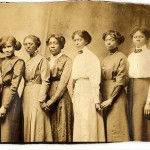“Know When to Hold em’ and Know When to Fold Them,” has become the most powerful phrase for me when training teachers. I was listening to a phenomenal 3P’s podcast -Season 4, Episode 9, with Dr. John Almarode and he was talking about Visible Learning in Science. He stated that great teachers, know when to hold back, when to fold altogether, and when to move forward. This simple statement grabbed my attention.
One of the problems I see so many teachers face is they go and observe another teacher or they read about a strategy on Facebook, implement it and it tanks. This can become incredibly frustrating for not only the teacher who is trying something new, but for the students. Another great idea comes along and they talk themselves into trying it and they see amazing results. Thus, now telling all of their colleagues about how high-fives at the door every morning, or crossword puzzles for morning work have changed their classroom. So, why do some strategies work for some teachers and fall apart for others? Why do some teachers seem to nail things, and other teachers who have the same access can’t seem to get the idea off the floor?
It goes back to that simple statement at the beginning, effective teachers, “know when to hold em’ and they know when to fold them,” because effective teachers know their students. When working in the classroom, it is easy to think every great strategy should be implemented. A new research study comes out and tells you that students need to have access to project based learning. Project based learning may not be appropriate every day all day. It is about finding balance and putting your students at the heart of the decisions you make. When working with a large group of resource students there may be times when whole group is appropriate, but there may be other educational times where small group work with token boards is a better strategy to keep students engaged in their learning based on the skills and needs of the learners sitting in front of you.
There may be opportunities where I high-five students at the door, but if I choose not to use this strategy, or I do it and it doesn’t work for the students in my class, that is okay too. I can fold or hold back a strategy when it doesn’t work for the student population I am working with.
Make no mistake, I’m not suggesting a strategy is going to be amazing in one day and change a classroom. You may have to try it more than one day and tweak it based on the individual students in your class. If you have done something for a while and have some data to support that the strategy isn’t going to yield the results you are looking for, it’s okay to say, “not for my students and not for my classroom.” Or keep the strategy and pull it out when the time is appropriate.
There are millions of great teaching ideas, strategies and educational suggestions. Teachers don’t always give themselves permission to not try them all. I recommend having a toolbox of strategies you can pull from when they are appropriate, at the time in which they are appropriate. An example would be think-pair-share. This is a fantastic strategy to use in order to determine what students know, and giving every student an opportunity to share their thoughts and ideas out loud. This strategy may not be appropriate to use with your kindergartens when you are at the beginning of a lesson where they have never heard of the concept. When it may be appropriate is when you are doing math talks with your class and they are working on solving a problem in their head.
Keep hold of strategies you come across, because you never know when you may want to try something, or when the situation arises and that new teaching idea is just what you need.










Comments 1
Knowing when to hold em or fold em.. I think this is my new favorite slogan.. I am going back and reading stuff that has caught my eye now that I am on break and I have to say I enjoyed this post.. This subject is something I deal with quite a bit and its so true..